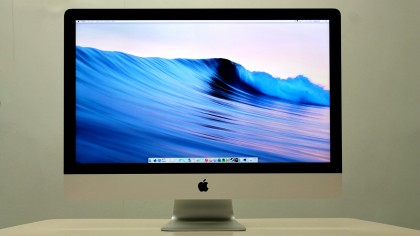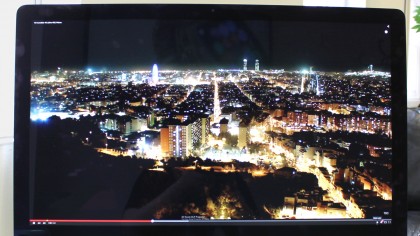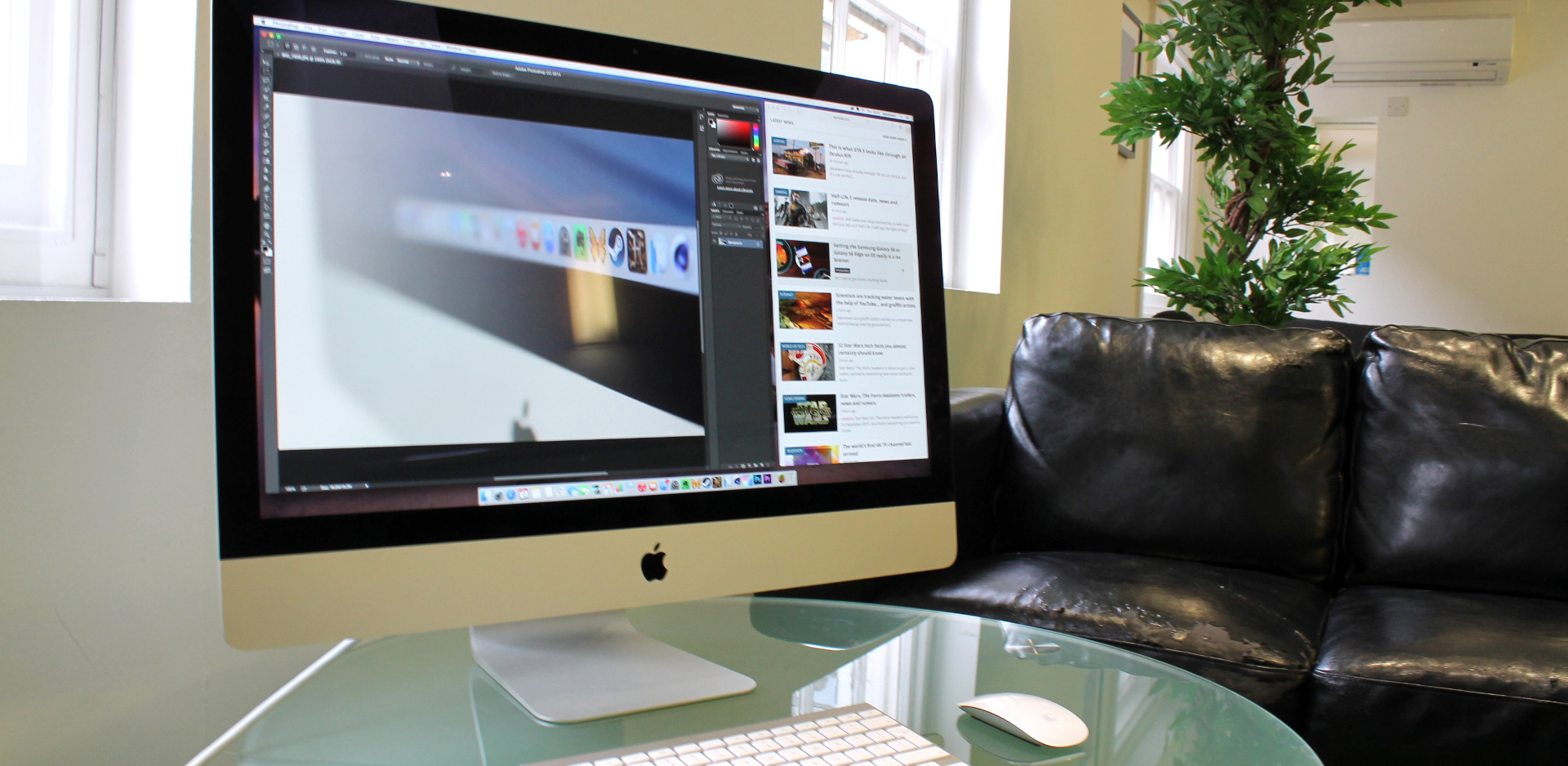Why you can trust TechRadar
The iMac 5K with Retina performed admirably during my time with it no matter how much I threw at it. It boots in around 14 seconds from cold thanks to the SSD part of its Fusion drive, and the Radeon GPU proved more than capable of pushing pixels when editing high-resolution images with little or no slowdown.
While it managed to chew through any game I threw at it with the resolution turned down, the mobile graphics chip and its 2GB of virtual memory struggled to run anything at the iMac's native 5K resolution with anything approaching playable frame rates.

Benchmarks
- Xbench: Overall: 623; CPU: 391.17
- Cinebench R15 Single Core: 142cb; Multi Core: 540cb; Open GL: 91.80 fps
- Unigine Heaven 4.0 Medium quality (2,560 x 1,440): Score 741
- Unigine Heaven 4.0 Ultra quality (2,560 x 1,440): Score 451
- NovaBench: Score: 963; Graphics 185
- Batman: Arkham City (High, 5,120 x 2,880): Minimum: 7fps; Maximum: 26fps; Average 22fps
- Batman: Arkham City (2,560 x 1,440): Minimum: 28fps; Maximum: 82fps; Average: 70fps
- Tomb Raider (5,120 x 2,880): Minimum: 10fps; Maximum: 19.7fps; Average: 14.7fps
- Tomb Raider (2,560 x 1,440): Minimum: 37fps, Maximum: 59fps, Average: 49.2fps
I fired up Final Cut Pro and took it full screen to see some 4K video footage at 100% in the corner, with the timeline and other clips visible around it, for live editing. Again, 4K video playback was smooth as it went through the timeline, without any pausing or hanging between clips - of course, the SSD portion of the Fusion Drive was probably in use here. Even with three browsers running at once with 10 or more tabs open in each, watching a 4K video on YouTube at full screen produced no stuttering or choppiness.

Gaming and display
Gaming on the iMac was more of a mixed bag. If your intention is to play modern titles in 5K, coughing up extra for the R9 M295X with 4GB of video memory would help when loading high-resolution textures in games. However, the R9 M290X with its 2GB of video memory had no trouble handling Batman, Borderlands: The Pre-Sequel and Tomb Raider at 1440p with all settings set to maximum, and they still looked incredible. Only when the resolution was upped to 5K did frame rates drop to unplayable levels.
The display's benchmarks make for particularly pleasing reading. Using an X-Rite i1Display Pro colorimeter, I was able to record a room illuminating brightness of 459.5 cd/m2 (or nits). Screen uniformity was mainly impressive with a blip or two, showing a shaded patch in the far left-hand side of the screen that measured 17% darker than the centre of the panel and a patch in the top centre edge of the panel that deviated 16.65% in brightness compared to the centre. The display showed a fairly even brightness everywhere else.
The iMac measured impressive inky black levels of 0.3785 cd/m2, and a contrast ratio of 1213.9:1, which combined gave an average delta of 1.54 (anything below 2 is considered good). The iMac covered 98.6% of the sRGB colour space, which should prove sufficient for photography professionals requiring decent colour accuracy.

